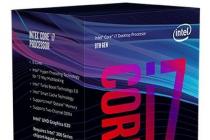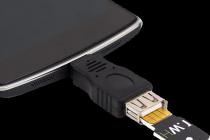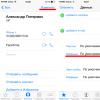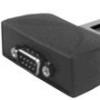The DxOMark rating is a very important factor when choosing a smartphone for camera quality. If you are not one of those who think that the more megapixels, the better, then you should pay close attention to this rating.
What is DxOMark and what is known for?
DxOMark is a logical continuation of the activities of the French company DxO Labs. This company develops software and manufactures equipment for measuring and evaluating the performance of photo equipment.
DxO is known for its professional software such as:
- DxO OpticsPro. Raw corrector
- DxO ViewPoint. allows you to correct distortion from wide-angle lenses and more.
- DxO FilmPack. Emulates the effect of various films in digital format.
- DxO Analyzer. A set of software tools designed to test photo sensors, matrices, sensors, etc. It can display the results both in the form of numerical data and in graphical form.
And even their own devices. They released DxO ONE, a 20 megapixel external camera for iPhone with good performance.
Does DxOMark help you choose the best camera?
This is where DxOMark will help us. Although the resource is in English (well, at least not French), everything is quite clearly presented there.
Cameras try to compare in the same places and conditions, photographing the same places for years. Many templates for shooting, special stands for shooting in certain lighting conditions, with different ISOs, etc.
DxO bench for laboratory testing
At the head of this whole composition is a Chinese cowboy. His photo for me has become almost the face of the entire resource. 😉
In the new testing methodology, they began to compare the quality of the software modes of smartphone cameras. DxO is especially interested in the portrait mode and software creation of bokeh (blur):
Also, in addition to photos, here you can find various graphics:
![]()
![]()
![]()
![]()
Even if you don’t like to delve into all this at all and you’re too lazy to read, then on the main page there is immediately a board of honor, the best cameras according to DxOMark. At the time of writing, it looked like this:
![]()
I would like to draw your attention to the last one on this list, Nokia 808 Pure View. The phone entered the market 5 years ago, in the summer of 2012, and still manages to keep the bar. The huge matrix and the physical dimensions of the sensor still affect the quality of the pictures.
Can DxoMark be trusted?
The final figure looks fair, but in addition to dry numbers, it is better to look at graphs and photos. Different cameras have different characteristics, some camera can have good daytime shooting, but disgusting night shooting and vice versa. Some smartphone camera is more suitable for portrait shooting, some for landscapes, etc.
In terms of points, the phone may score the most, but specifically you may not like its camera. People do not often need good detail and dynamic range, many will choose a photo brighter and with high contrast. This was clearly shown to us by the guys from Hi-tech in their blind test of flagship smartphone cameras, you can see the results.
By the way, DxO Labs is not only engaged in mobile cameras, their main work is real adult DSLRs and lenses for them. They also write software to optimize their work and sell it to camera manufacturers.
And since among the subjects there are their clients in the software business. Therefore, they may be "slightly" biased when testing certain brands. However, DxO has never been caught lying and rigging the results.
In any case, it is worth choosing a smartphone camera for yourself. At the end of each review, you can see more detailed statistics, where you can study the strengths and weaknesses of the camera you are interested in.
Total. Trust or not?
The guys from DxO Labs are undoubtedly great, but you should not rely 100% on their ratings. But to take note of their work is undoubtedly necessary. Especially if you cannot decide between the two already selected smartphone models and the determining factor for you is the quality of the camera.
; the most expensive .
Characteristics: push-button; best camera; camera + battery ; .
Trends: novelties of the year; most anticipated.
10. Apple iPhone 8
The price, on average, is 51,600 rubles.
Among the giants from Samsung, Xiaomi and Huawei, the 4.7-inch Cupertino G8 looks small. But without problems it is located in a pocket and conveniently lies in a hand. Inside it is the top "apple" A11 Bionic chip, from 64 to 256 GB of memory for user data and a battery with a capacity of 1821 mAh.
Unlike the Plus version, the iPhone 8 has one 12 MP main camera. It has an f/1.8 aperture, 5x digital zoom, optical image stabilization and Live Photos support. But that was the case with the iPhone 7 as well. The key difference from the previous model is that the iPhone 8 can now shoot 4K video at 60fps, as well as slow-mo record at 240fps in 1080p (Full HD), not just 720p.
Pros:
- Convenient size.
- There is NFC.
- The camera takes excellent quality photos even in low light.
- The case is waterproof.
- Very loud stereo speakers.
Minuses:
- You cannot insert a memory card.
- The glass is not easily scratched, it is better not to carry the phone without a case.
The cost, on average, is 56,990 rubles.
 Everything is great about this phone: a frameless 6.3-inch AMOLED display, a huge amount of 6 GB of RAM, and from 64 to 256 GB of internal storage, one of the best Snapdragon 835 processors at the moment (or Exynos 8898M - depending on the region).
Everything is great about this phone: a frameless 6.3-inch AMOLED display, a huge amount of 6 GB of RAM, and from 64 to 256 GB of internal storage, one of the best Snapdragon 835 processors at the moment (or Exynos 8898M - depending on the region).
However, what makes the Galaxy Note 8 stand out from the competition is the dual 12-megapixel camera with optical image stabilization and optical Zoom 2x. It takes detailed, colorful photos, has a bokeh (background blur) effect, and has an easy-to-use yet fully featured app. The Galaxy Note 8 has no shortage of photo modes: Auto, Pro, Panorama, and Food, and the missing modes can be downloaded from the Galaxy app store. There's also a new Full View camera option that matches the size of Snapchat and Instagram Stories.
Pros:
- Futuristic frameless design.
- One of the best screens on the mobile market in terms of brightness and color reproduction.
- It is possible to add memory.
- There is NFC.
- There is fast and wireless charging.
- There is a stylus.
Minuses:
- Combined slot for nanoSIM and microSD.
 Compared to the tenth DxOMark smartphone camera rating of 2018, the “plus” model is 54 grams heavier, has a 5.5-inch screen and a dual 12/12 MP camera with a wide-angle and telephoto lens. The camera's autofocus is very fast, and you can shoot in 4K at 60 fps.
Compared to the tenth DxOMark smartphone camera rating of 2018, the “plus” model is 54 grams heavier, has a 5.5-inch screen and a dual 12/12 MP camera with a wide-angle and telephoto lens. The camera's autofocus is very fast, and you can shoot in 4K at 60 fps.
The overall camera performance is an evolution from previous iPhone lenses. Moreover, the sharpness in mixed conditions is impressive - you can see a lot of detail in both brighter and darker areas of the photo.
In general, the iPhone 8 Plus tends to overexpose each photo, making the image appear brighter than the subject or scene in real life.
Pros:
- Large screen with excellent color reproduction.
- Dual main camera that takes bright and very clear photos in any lighting condition.
- There is NFC.
- Very fast A11 Bionic processor.
- There is wireless and fast charging.
Minuses:
- You cannot insert a memory card.
- The battery lasts for a day of moderate use.
- Heavy and slippery body.
7. Xiaomi Mi MIX 2S
The estimated price in Russia is 32,000 rubles.
 At the end of March 2018, a presentation of a new 5.99-inch bezel-less phone from Xiaomi took place. The new Chinese phone with a good camera will receive the latest Qualcomm Snapdragon 845 processor, 6/64 GB, 6/128 GB or 8/256 GB of memory, as well as a 3400 mAh battery.
At the end of March 2018, a presentation of a new 5.99-inch bezel-less phone from Xiaomi took place. The new Chinese phone with a good camera will receive the latest Qualcomm Snapdragon 845 processor, 6/64 GB, 6/128 GB or 8/256 GB of memory, as well as a 3400 mAh battery.
Mi MIX 2S has a rear dual 12-megapixel camera with a Sony IMX363 sensor, 4-axis optical stabilization system, phase detection autofocus and 2x optical zoom.
In addition, the camera uses artificial intelligence to automatically adjust to shooting conditions and blur the background in portrait photos.
Pros:
- There is fast charging.
- There is a slot for a memory card.
- The top model will be "enclosed" in an elegant ceramic case. Regular versions will get a glass back.
- The ability to identify the user by face.
- This is the most inexpensive smartphone with a good camera in our top 10.
- There is NFC.
Minuses:
- Most likely, like Mi Mix 2 - one of them, his "big brother" will be very slippery. And all its beauty will be hidden in the case.
6. Huawei Mate 10 Pro
It is offered for 44,890 rubles.
 Few Chinese smartphones match the design and performance of this luxurious glass and metal gadget with a six-inch OLED screen and 18:9 aspect ratio. The nimble HiSilicon Kirin 970 processor, 6 GB of RAM and 128 GB of flash memory allow the Mate 10 Pro to "pull" heavy applications and games at maximum settings. And the 4000 mAh battery will last a day and a half under full load.
Few Chinese smartphones match the design and performance of this luxurious glass and metal gadget with a six-inch OLED screen and 18:9 aspect ratio. The nimble HiSilicon Kirin 970 processor, 6 GB of RAM and 128 GB of flash memory allow the Mate 10 Pro to "pull" heavy applications and games at maximum settings. And the 4000 mAh battery will last a day and a half under full load.
There are two camera modules on the back of the Mate 10 Pro: a 12-megapixel color sensor with optical image stabilization, and a 20-megapixel black and white sensor. Both cameras have f/1.6 apertures. This solves the problem with poor image quality in low light.
The phone also supports the new AI zoom (intelligent digital zoom), and can evaluate the subject in the viewfinder field to set the optimal shooting parameters.
Pros:
- Huge screen with rich colors and automatic brightness control.
- Clear and loud sound from stereo speakers.
- There is NFC.
- Instant fingerprint sensor.
- There is fast charging.
Minuses:
- You cannot insert a memory card.
- No 3.5 connector.
The average cost in the maximum configuration is 70,400 rubles.
 The frameless 5.8-inch smartphone was the most anticipated new product of 2017 from Apple. Losing the Home button and redesigning it was a dangerous but necessary step after many years of similarity between most iPhone models. The result is a powerful and elegant device with a fast A11 Bionic hexa-core processor, 256 or 64 GB of internal storage and face recognition.
The frameless 5.8-inch smartphone was the most anticipated new product of 2017 from Apple. Losing the Home button and redesigning it was a dangerous but necessary step after many years of similarity between most iPhone models. The result is a powerful and elegant device with a fast A11 Bionic hexa-core processor, 256 or 64 GB of internal storage and face recognition.
The pride of the iPhone X is the dual 12/12 MP rear camera. It has an f / 1.8 aperture, and can take pictures with natural colors and minimal “noise”.
To improve low-light shots, iPhone X uses a wide-angle lens and digital zoom. Therefore, the image taken at night will not appear dull and blurry.
"Standard" iPhone photos automatically have a good level of blur.
The front camera TrueDepth with a resolution of 7 MP takes very bright and clear selfies. Not only can it blur the background, you can also use the Portrait options to change the lighting of the scene, or cut yourself out of the image altogether and place your image against a black background.
Pros:
- Top performance.
- Great cameras.
- Convenient interface.
- Juicy and bright screen.
- There is NFC.
- Convenient Face ID option.
Minuses:
- You cannot insert a memory card.
- The case is slippery and heavy.
Can be purchased for 45,380 rubles.
 The Google Pixel 2 is a prime example that two rear cameras aren't always better than one. This small 5-inch phone also features an extremely convenient way to call the Google Assistant smart assistant. Just squeeze the sides of the phone. It's much easier than accidentally pressing another button (Bixby) on the Samsung Galaxy S9 Plus.
The Google Pixel 2 is a prime example that two rear cameras aren't always better than one. This small 5-inch phone also features an extremely convenient way to call the Google Assistant smart assistant. Just squeeze the sides of the phone. It's much easier than accidentally pressing another button (Bixby) on the Samsung Galaxy S9 Plus.
Play the latest games effortlessly on the Pixel 2 thanks to a Qualcomm Snapdragon 835 processor, 4GB of RAM, and 64GB to 128GB of storage for user data.
The 12.2MP rear camera with f/1.8 aperture is the best part of the Pixel 2. The colors in the photos are true to life and the shots look bright. Even photos taken in low light with the Pixel 2 look like we've turned on the lights.
Both the 8-megapixel front and rear cameras have a background portrait blur mode. This phone also has optical image stabilization and very fast laser autofocus.
Pros:
- Fits comfortably in the palm of your hand.
- Has an NFC chip.
- It has an IP67 waterproof rating.
- Holds a charge for a long time, despite the seemingly modest battery capacity - 2700 mAh.
- Excellent stereo speakers.
Minuses:
- You cannot insert a memory card.
You can buy for 54,000 rubles.
 It's one of the biggest Android phones out there, thanks to its 6.2-inch bezel-less screen. It's similar in many ways to last year's S8 Plus, but the updated model has changed the location of the fingerprint sensor (now centered on the back) and has stereo speakers.
It's one of the biggest Android phones out there, thanks to its 6.2-inch bezel-less screen. It's similar in many ways to last year's S8 Plus, but the updated model has changed the location of the fingerprint sensor (now centered on the back) and has stereo speakers.
The powerful Exynos 9810 chipset, impressive 6 GB of RAM and 64 to 256 GB of internal memory will allow you to use the smartphone for several years when other flagships are already obsolete.
The Galaxy S9 Plus (as well as the S9) has an excellent dual 12/12-megapixel camera with an f/2.4 aperture that automatically applies in bright light and expands to f/1.5 in the dark. This is the world's first mobile phone with such a wide aperture. Thanks to this, a photo taken in low light will be extremely detailed and bright.
The phone's main camera can capture super slow motion video at 960fps. And the 8MP front camera can be used to make your face animated with AR Emoji.
Pros:
- There is a slot for memory expansion.
- You can make contactless payments.
- Battery 3500 mAh.
- Fantastically beautiful appearance.
- The widest aperture of the main camera in the ranking of smartphones with the best camera of 2018.
- There is both wireless and fast charging.
- There is a face unlock.
Minuses:
- Fingerprints are clearly visible on the rear panel glass.
- AR Emoji is an over-hyped feature, few features.
Estimated cost - 46 thousand rubles.
 Updates for the P20 compared to last year's Huawei P10 include a glass back, new body colors, a powerful Kirin 970 octa-core processor, and a larger screen size of 5.8 inches versus 5.1 on the Huawei P10. In addition, the P20 model has acquired 128 GB of flash memory and has 4 GB of RAM. That should be more than enough for most tasks, although it's less than the 6GB inside the P20 Pro.
Updates for the P20 compared to last year's Huawei P10 include a glass back, new body colors, a powerful Kirin 970 octa-core processor, and a larger screen size of 5.8 inches versus 5.1 on the Huawei P10. In addition, the P20 model has acquired 128 GB of flash memory and has 4 GB of RAM. That should be more than enough for most tasks, although it's less than the 6GB inside the P20 Pro.
The Huawei P20 has a dual main camera (12 MP f/1.8 color module and 20 MP f/1.6 monochrome module). Thanks to the wide aperture, the camera can capture more light, and even in low light, pictures come out very clear and with minimal digital noise. The camera has built-in memory, thanks to which you can shoot in super slow motion at 960 frames per second and in HD resolution. Until now, only smartphones with a good camera from Sony and Samsung could boast of this.
On the front of the Huawei P20, there is a 24-megapixel selfie camera that shows the details of the face in such detail that the slightest pimples are visible.
Pros:
- Premium design.
- flagship processor.
- Great cameras.
- Capacious 3400 mAh battery.
- There is fast charging.
- There is NFC.
Minuses:
- You cannot insert a memory card.
- There is no headphone jack.
- Thick bottom bezel.
The estimated price is 64,100 rubles.
 The best camera phone of 2018, the Huawei P20 Pro, features a top-of-the-line design and significant internal upgrades. Compared to the Huawei P20, the new photo flagship boasts a larger 6.1-inch OLED screen with an 18:9 aspect ratio, a larger 4000 mAh battery, 6 GB of RAM (4 GB for the regular model) and IP67 water resistance.
The best camera phone of 2018, the Huawei P20 Pro, features a top-of-the-line design and significant internal upgrades. Compared to the Huawei P20, the new photo flagship boasts a larger 6.1-inch OLED screen with an 18:9 aspect ratio, a larger 4000 mAh battery, 6 GB of RAM (4 GB for the regular model) and IP67 water resistance.
However, the most important difference is the unique triple camera, created in collaboration with the German company Leica. This is the best camera in a smartphone in 2018 at the moment.

The question arises: why does a smartphone need three cameras at once? Previously, Huawei equipped its gadgets with cameras with a color and black-and-white sensor, which worked in tandem to produce photos with improved depth and sharpness. And thanks to the addition of a telephoto lens, you can shoot objects that you can’t get close to. It allows you to zoom in on an image without losing its quality.
The Huawei P20 Pro has a fantastic 40MP color lens and works alongside a 20MP monochrome sensor.
Above the RGB lens is an 8-megapixel sensor. It has 3x optical zoom and 5x software zoom.
Sample photos on Huawei P20 Pro

In bright light

Portrait

Bokeh portrait

In low light conditions
The camera also features software enhancements, including six-axis AIS image stabilization, which allows you to take great pictures in low light without using a tripod. And the intelligent assistant Master AI will tell you how to best compose a shot when shooting landscapes and group portraits.
On the front of the phone, there is a 24MP f/2.0 sensor that will show your face in every detail in the selfie.
Pros:
- The glass back panel shimmers beautifully, and thanks to the rounded edges, the gadget fits comfortably in the hand.
- Powerful camera.
- Top-end Huawei Kirin 970 processor with NPU module for neural network computing.
- There is NFC.
- There is Huawei Super Charge fast charging technology.
- Very fast touch fingerprint sensor built into the Home button below the screen.
Minuses:
- There is no headphone jack.
- Thick bottom bezel.
- No support for memory cards. You will have to be content with the built-in memory of 128 GB.
The P20 Pro puts so much emphasis on camera improvements that other elements of the phone seem to be comparatively left out in terms of upgrades. Nevertheless, this is the most beautiful and powerful phone from Huawei. In Russian stores, he, as well as P20, will appear in April.
2019 has been a great year for photography enthusiasts, with several new smartphones hitting the market with promises of better camera performance. The quality of photos, according to them, is able to surpass the achievements of all devices of previous generations. Have the companies achieved their goals? We will tell about this in the ranking of smartphone cameras in 2019, based on data from the DxOMark website.

10 Samsung Galaxy S6 Edge Plus
DxOMark Mobile Rating: 87The 16 megapixel camera is perfect for those who like to shoot on the go, as well as for perfectionists who want to get the most out of the device, even in the most adverse conditions.
Its most important benefits include:
- Quick launch with two taps of the button below the screen. The function works even when the smartphone is locked.
- Simple and intuitive controls. For example, icons of frequently used functions are placed in a separate line, which can be hidden if necessary.
- Ability to take clear pictures in poor lighting conditions with a larger f1.9 aperture, Intelligent Optical Image Stabilization, and a combination of software and hardware image processing.

9 One Plus 5
DxOMark Mobile Rating: 87Hot new this summer, OnePlus 5 has confidently entered the top 10 smartphones with the best camera in 2019. The smartphone has not one, but two cameras - one 16 megapixel with f / 1.7 aperture and an additional 20 megapixel sensor with f / 2.6 aperture.
Advantages:
- Photos taken by OnePlus 5 show excellent white balance in various lighting conditions.
- Pleasant colors and high detail retention even in bright light.
- Experts who tested this camera phone also note a very stable autofocus in both manual and automatic modes.
True, there were some shortcomings too - in low light, the quality of the photo may be slightly worse (color changes, especially at the edges of the picture). The OnePlus 5 also has difficulty capturing small textured patterns in a picture.

Motorola Moto Z Force Droid
DxOMark Mobile Rating: 87New last year, Motorola Moto Z Force Droid is not losing ground. If the front camera has a resolution of only 5 megapixels, then the main one has 21 megapixels (f / 1.8).
Advantages:
- Photos are distinguished by low noise, high detail and natural colors.
- There is both laser and phase autofocus.
- The camera can read barcodes.
- Correct exposure (although there are exceptions).
Of the shortcomings, one can only note the difficulty with detailing in bright light and problems with white balance in low light levels.

7Huawei P10
DxOMark Mobile Rating: 87Cooperation with the German photo lab Leica Camera AG benefited the Chinese smartphone. It is equipped with a dual camera, which has a monochrome sensor of 20 megapixels and a color sensor of 12 megapixels, lenses with an aperture of f/2.2. Together with the software, such a camera can provide almost unlimited possibilities in the field of photography.
Strengths:
- Both cameras have anti-reflective coating.
- Shooting both outdoors and indoors in the light and in the dark are characterized by high detail and accurate color reproduction.
- There is a background blur (“bokeh”) effect and an HDR function to combine the best elements of different photos into one.
- You can manually adjust various settings, up to white balance and ISO and exposure.
Cons: sometimes cameras can argue with each other - on some color shots taken at a resolution of 20 megapixels (if a monochrome matrix is \u200b\u200bresponsible for detail, then color information is read from the second photosensor) there may be a slight color distortion.

6 Sony Xperia X Performance
DxOMark Mobile Rating: 88This inexpensive smartphone has one of the best cameras for selfies at the moment - the front camera is equipped with a 13 MP sensor and f / 2.0 aperture.
And the photos taken by the 23-megapixel main camera at f/2.0 are remarkably sharp, with excellent color reproduction and attention to detail (the camera is especially good at smoothing down the level of sharpness when shooting distant shots).
The camera phone also has a number of disadvantages:
- When shooting macro, the detail in the corners suffers, but this is a common disease of almost all smartphone cameras.
- The manufacturer of the smartphone stated that the device has a predictive focus mode. However, in practice, this is nothing more than a clever marketing ploy. Although the camera is hovering in 0.03 seconds, the user will not notice a difference even if it takes 0.1 seconds to hover.
- The Xperia X Performance does not have a 4K mode, although videos recorded at Full HD at 60 fps come out excellent.

5 Samsung Galaxy S7 Edge
DxOMark Mobile Rating: 88Although the camera of the tenth place in the ranking of the best cameras in a smartphone in 2019 was quite successful, the Korean company decided not to stop there. The Samsung Galaxy S7 Edge has a completely new model installed.
- Although the resolution of the new camera is 4 megapixels less than that of the S6, however, the aperture increased to f / 1.7, capable of delivering great photos even at night.
- The pixel size is increased to 1.4 microns, thanks to which you can get more information on the matrix.
- Now the video can be shot in slow motion and a time-lapse mode has appeared.
- This model also has a Food mode that allows you to adjust the subject while leaving everything else in a blur, and adjust the temperature of the colors to make the hue cooler or warmer. A find for those who post photos of what they have eaten and drunk on social networks.
The picture is spoiled only by a single LED flash.

4 Samsung Galaxy S8
DxOMark Mobile Rating: 88In general, the Samsung Galaxy S8 camera worthily continues the traditions of the company's smartphones - in some aspects it can adequately compete with the first place in the rating.
- The 12MP main camera sensor and f/1.7 aperture lens are capable of delivering the highest quality photos and great videos.
- The front camera has a resolution of 8 MP and an aperture of f/1.7. And this means that both selfies and conference calls will be at the highest level, both during the day and at dusk.
- The camera phone is equipped with Dual Pixel technology for perfectly fast and accurate autofocus, even with sudden movements and in a dark room.
- Multi-shot shooting will allow you to combine several photos into one.
- There is a "tasty" mode "Food".
- Excellent optical stabilization works as it should and does not "soap" the picture.
However, if you shoot multiple photos in quick succession, fluctuations in brightness may occur. Well, traditionally, like many other smartphones, objects in the center of the image are shown with greater detail than at the edges.

3 HTC 10
DxOMark Mobile Rating: 88The camera sensor of the third place in the top 10 best camera phones of 2019 has a resolution of 12 megapixels and an f / 1.8 lens equipped with an optical stabilization system.
Why the HTC 10 has a good camera:
- Macro photography is characterized by a high level of detail, natural shadows and the almost complete absence of artifacts.
- There is optical stabilization.
- There is a laser focus.
- There is a flash of two LEDs of different tones.
In terms of frame sharpness, the smartphone is inferior to number four on the list, but the photos come out closer to what a person sees when shooting. The maximum sharpness of the HTC 10 is "targeted" at objects in the foreground, while the rest of the plans are blurred, while the SGS8 has the same frame sharpness over the entire area.
The disadvantages are common - sharpness drops from the center to the corners, although smoothly and slightly, and when shooting with different levels of illumination, color reproduction may suffer. In general, among budget smartphones, this one has the best camera.

2 Google Pixel
DxOMark Mobile Rating: 89The Google Pixel's 12.2-megapixel main camera sensor with f/2.0 aperture has an interesting feature called gyroscopic autofocus stabilization. Greatly enhances the camera's capabilities with fast and accurate autofocus and software, especially the HDR+ mode. Photos are distinguished by bright, natural colors, low noise, a high level of detail (even when shooting brightly lit objects).
Another “feature” of the camera is the Lens Blur function, which software imitates the “bokeh” effect.
The front camera has a resolution of 8 megapixels and f/2.4 aperture. In terms of its selfie capabilities, it is not inferior, and even surpasses the hyped iPhone 7 Plus. The Google Pixel has better selfie sharpness and a wider field of view, which makes it possible to fit more objects into an arm's length frame.
The only drawback of the device: a small number of settings and photo processing algorithms from Google may not appeal to those who like to “finish” photos with their hands.
![]()
1 HTC U11
DxOMark Mobile Rating: 90Perfect color reproduction, very low noise, natural shadows and instant UltraSpeed Autofocus that stays on target even in low light are some of the many benefits of the HTC U11 camera.
What else can boast of this camera phone:
- 12MP main camera with f/1.75 aperture and 16MP front camera with f/2.0 aperture and no autofocus.
- Both cameras have HDR Boost - a technology that allows you to make an HDR picture out of a regular photo.
- Both optical and electronic stabilization are supported.
- Video recording can be done in 4K resolution.
- There is a Slow Motion mode (1080p / 120 FPS).
The only thing the champion of the 2019 camera phone rating is inferior to the fourth place in the rating (Samsung Galaxy S8) is in digital image noise. If the quality of the textures is the best in the ranking (the smartphone scored a maximum score of 94), then the noise level is slightly worse than that of the Samsung Galaxy S8 (89 versus 92).

© 2016 site
The French company DxO Labs is known as a developer and manufacturer of equipment and software for measuring and evaluating the performance of photographic equipment, as well as the author of a good DxO Optics Pro RAW converter. In addition, DxO Labs regularly publishes some of its research results under the guise of the famous DxOMark rankings.
DxOMark is a collection of metrics that somehow characterize the key parameters of digital cameras and photographic lenses. Strictly speaking, in this case, only those parameters that directly affect the image quality are analyzed. In other words, DxOMark describes the properties of the photomatrix and the optical block, but in no way takes into account the reliability, functionality, ergonomics and other features of photographic equipment, although important for the photographer, but either do not affect the image quality at all, or have only an indirect effect on it.
The authors of the rating themselves position DxOMark as an objective, independent, comprehensive database that is a proven industry standard. These are the dreams of the leadership of DxO Labs. Do they match reality? Not quite.
There is no doubt that the DxOMark rating is quite convenient when comparing different cameras, but it should be used with caution and, I would even say, with a certain amount of skepticism. And in any case, one must carefully avoid categorical judgments like: “Camera A is better than camera B, since the DxOMark rating for camera A is 83 points, and for camera B only 80.” Are you sure that a difference of three points is significant enough to recognize one camera as better than another, even all other things being equal (which in reality are never absolutely equal)? In addition, the DxOMark rating usually means "Sensor Overal Score", i.e. the overall rating of the matrix, which is actually a very controversial and ambiguous value. Does anyone outside of DxO Labs know how it is actually calculated and what its physical meaning is, so to speak?
The fact is that the Sensor Overall Score is an artificial integral indicator designed to represent a vast array of test data in the form of a single digit. In practice, this is possible only with a large number of assumptions and inaccuracies.
In order not to be unfounded, I will illustrate the ambiguity of the overall rating with a specific example. Let's choose two cameras for comparison: Nikon D4s and Nikon D810. The overall rating for D4s is 89 conventional units, and for D810 - 97. The difference is significant - almost 9%. Does this mean that the D810 definitely outperforms the D4s in terms of image quality? Let's figure it out. Click on View Comparison to show a detailed comparison and open the Measurments tab. This tab is good because it allows you to get acquainted with the results of specific measurements that can be accurately numerically expressed. You can briefly read about measurement methods there, on the DxOMark website. At the moment we are interested in the dynamic range of the considered cameras.
The Dynamic Range graph clearly shows how, as the ISO sensitivity increases, the dynamic range of the matrix narrows. However, this should not surprise us. Much more interesting is that the dependence of dynamic range on ISO is non-linear and differs from matrix to matrix. This is due to both the properties of the matrices themselves and the difference in the algorithms for noise reduction, preamplification, digitization, etc. Depending on the purpose of the camera, the electronic binding of the matrix can be configured in different ways, and a comparison of Nikon D4s and Nikon D810 clearly demonstrates this.
Red color - Nikon D4s, orange color - Nikon D810.
We see that the maximum dynamic range (achievable, as you know, at the base ISO value) for the D4s is 13.3 (at ISO 100), and for the D810 - 14.8 EV (at ISO 64), i.e. one and a half steps more. Even if we raise the D810's ISO to 100 to match the D4s, which has ISO 100 as its minimum, the D810 will still outperform the D4s by 1.1 EV. What does this mean in practice? That in good light (when we have the ability to shoot at the lowest ISO values), the D810 allows for slightly cleaner shots, featuring better shadow detail and allowing for more intensive post-processing. One and a half steps is not too big a difference, but still enough to be seen with the naked eye.
But what happens as the ISO rises? It turns out that the graphs intersect, and at ISO 800 D4s is already objectively ahead of D810 in terms of dynamic range, and at ISO 6400 the difference reaches 1 EV in favor of D4s. Those. when shooting at high ISOs, the D4s gains an objective advantage over the D810. And this is natural. After all, the D4s is a reportage camera that most of the time has to work in low light conditions, and therefore it is not surprising that its sensor is optimized for high ISO performance. At the same time, the D810 is more focused on studio or landscape shooting, i.e. to those situations that allow you to use the minimum ISO value.
In short, under ideal conditions, the D810 achieves better image quality than the D4s and therefore has a higher Sensor Overall Score, but in conditions that are far from ideal (and reportage cameras are rarely purchased to work in ideal conditions), the D4s puts the D810 on the shoulder blades. And that's not taking into account the faster burst speeds, better weather protection, and overall more robust design of the D4s. Those. one or another camera turns out to be better or worse in the eyes of a particular photographer, depending on the photographic tasks that he is going to solve with it. For example, for a landscape photographer, absolute image quality is of paramount importance, and a heavy and expensive reportage camera will be more of a burden than a help for him. On the contrary, some sports photojournalist is ready to sell his soul for a high rate of fire and the ability to shoot at exorbitant ISO values. To each his own.
By the way, I consider it my duty to remind readers that the dynamic range measured by DxO Labs is the so-called. effective or technical dynamic range, i.e. the ratio between the saturation threshold and the sensitivity threshold of the sensor. The useful dynamic range does not have a generally accepted definition, but in any case it is several steps less than the technical one.
The same is true with lenses. The test results themselves are quite reliable, and they can be used to compare different models with each other, but the interpretation of these results requires a thoughtful and critical approach. First, as with cameras, you should not blindly trust the overall rating, the calculation method for which is kept secret, but instead it is better to turn to specific measurements. Secondly, it should be remembered that the conditions in which DxO Labs conduct their tests do not quite correspond to the actual conditions in which lenses are used.
For example, many wide-angle lenses (like the Canon 20mm f/2.8 USM) have a pronounced curvature of the image field. When shooting a flat test target at close range (which is how most tests are done) the curvature of the field is very noticeable and the lens gets an undeservedly low sharpness rating. When shooting real three-dimensional scenes, the curvature of the field not only does not spoil the picture, but sometimes even turns into the dignity of the lens, allowing objects of different plans to be captured with equal sharpness.
Or another example. The telezoom Nikon 200-400mm f/4G VR II, which is popular among hunters, has a fairly high sharpness rating, and this lens is really sharp… But only at close distances (and the test charts are shot right up close). At longer distances, however, the sharpness is noticeably reduced, and the Nikon 200-400 begins to lose in image quality to some lighter and cheaper models. Not every hunter will be satisfied with a short-sighted lens, and DxO ratings do not reflect this unfortunate fact!
In summary, DxOMark is a useful and handy tool for comparing cameras and lenses, but it should be used with caution, being aware of what is behind the numbers published by DxO Labs.
Thank you for your attention!
Vasily A.
post scriptum
If the article turned out to be useful and informative for you, you can kindly support the project by contributing to its development. If you did not like the article, but you have thoughts on how to make it better, your criticism will be accepted with no less gratitude.
Do not forget that this article is subject to copyright. Reprinting and quoting are permissible provided there is a valid link to the original source, and the text used must not be distorted or modified in any way.

Smartphones with the best camera 2018 - 2019: Top 10 ranking
Last update date: 02/25/2019
With such a wide variety of smartphones, choosing a gadget is becoming more and more difficult. For many buyers, availability is an important criterion. We present to your attention the DxOMark smartphone camera rating, in which you will find smartphones with the best camera in 2018 - 2019:
10th place - Apple iPhone X (101 points)

The iPhone X is Apple's top smartphone and currently ranks 9th. The gadget is top in everything, including the most expensive device. According to the test results, the camera scores 101 points. The camera has the following characteristics:
- sensor model: Sony Exmor RS
- sensor type: CMOS
- aperture: f/1.8
- flash: double, led
- sensor size: 1/3"
- optical stabilization
Apple iPhone X lives up to its flagship positioning, its camera is excellent in everything: the image is sharp, BB is correct, noise is minimal, color reproduction is excellent. In portrait mode, images are sharp even indoors, and background blur is soft and natural. As a result, the gadget confidently tops the rating of smartphones with a good camera in 2019.
9th place - Huawei P20 (102 points)

If the Huawei P20 series of smartphones did not have the older Pro modification, the regular P20 modification would just as surely take the lead and is another smartphone with a good camera. It is quite logical that the gadget is inferior to its older brother and gains 102 points. The camera has the following characteristics:
- double chamber;
- the main camera shoots with a resolution of 12 MP, the RGB sensor has a 1/2.3 inch, the lens has an aperture of f/1.8 and an equivalent focal length of 27 mm;
- the secondary camera has a 1/2.78-inch monochrome sensor that shoots at 20 MP, the lens has an aperture of f/1.6 and an equivalent focal length of 27 mm;
- phase focus;
- 5.8" display, 2240 x 1080 resolution;
- default focal length is 55mm.
While it lacks the impressive camera of the P20 Pro, Huawei's digging into the P20 took the more straightforward route, taking the proven dual camera from the P10 and tweaking it to the point where it was well ahead of the competition at launch. The P20 boasts a camera without any major flaws. It is capable of producing images with good detail and low noise in all lighting conditions, and is equipped with a fast and reliable autofocus system. Photos with bokeh effect look natural, and the zoom is the best that is available among gadgets without a special telephoto lens. Video mode is also good, in which the P20 is able to shoot smooth (due to good stabilization) and clear (due to reliable autofocus) videos. The gadget is really an excellent camera phone, which can be safely recommended not only to lovers of mobile photography, but even to photographers. We can confidently say that Huawei P20 is a smartphone with the best camera. Sample photos can be found at.
8th place - Samsung Galaxy S9 Plus (104 points)

Samsung Galaxy S9 Plus was officially presented at the end of February 2018 and at the time of release had the best camera among all smartphones. According to the test results, the gadget is gaining 104 points. The main characteristics of the camera are as follows:
- sensor model: Sony IMX345 Exmor RS
- sensor type: CMOS
- aperture: wide-angle f/1.5, telephoto f/2.4
- flash: double, led
- maximum resolution: 4032 x 3024 (12 MP)
- sensor size: 1/2.55″ wide and 1/3.6 telephoto
- optical stabilization
- 4K video recording at 60 frames per second
The Samsung Galaxy S9 Plus camera lacks any major flaws. Both stills and videos perform well in all shooting conditions, regardless of lighting conditions. Also pleased with the perfectly working function for creating a bokeh effect. Any buyer looking for a quality camera should pay attention to this particular model.
7th place - Xiaomi Mi8 (105 points)

Introduced on May 31, Xiaomi Mi 8 is the top-end device from the Chinese manufacturer and it is another smartphone with a good camera. The novelty has top specifications and of course is equipped with a Qualcomm Snapdragon 845 processor, exactly like the Mi MIX 2S, released earlier this year. The camera of the gadget has the following main characteristics:
- Dual camera;
- Based Camera:
- Sensor model: Sony IMX363 Exmor RS;
- Sensor type: CMOS (complementary metal-oxide semiconductor);
- ISO (light sensitivity): 100 - 3200;
- Lens aperture: f/1.8;
- Flash Type: Dual LED;
- Video resolution: 3840 x 2160 pixels (8 MP);
- Video - frame rate/fps: 30 fps;
- Sensor Size: 1/2.55";
- Pixel size: 1.4 µm;
- Stabilization: yes, optical, 4-axis;
- FPS @ 1080p: 240
- FPS @ 720p: 240
- Additional camera(telephoto):
- Sensor model: Samsung S5K3M3 (ISOCELL);
- Image resolution: 4032 x 3024 pixels (12 MP);
- Pixel size: 1.0 µm;
- Lens aperture: f/2.4;
Perhaps Xiaomi is not the best flagship smartphone, but Mi 8 offers a quality camera that is not inferior to more eminent and expensive competitors. It provides very fast and accurate autofocus, excellent exposure and detail in various lighting conditions. There is good dynamic range and a quality telephoto camera with 2x zoom, as well as bokeh effect. The video didn't disappoint either. As a result, buyers will receive one of the best price / quality ratios and the title of a budget smartphone with a good camera, occupying one of the leading positions in the 2019 DxOMark smartphone camera rankings. Sample photos can be found at.
6th place - HTC U12+ (106 points)

The new U12+ model is a great example of evolution from the previous generation U11+, when a successful smartphone has become better, while retaining the usual features. One of these improvements also affected the gadget's camera, which has the following main characteristics:
- Dual camera;
- The main camera shoots with a resolution of 12 MP, has a 1/2.55-inch sensor, a pixel size of 1.4 microns, f/1.75 lens aperture, optical stabilization;
- 16MP secondary camera, 1.0µm pixel size, f/2.6 telephoto lens (2x optical zoom);
- Laser autofocus;
- Dual LED flash;
- 4K video is recorded at 60 fps.
Despite a slight evolution from the previous generation, the new HTC U12+ has taken a significant step forward in terms of the camera, bringing to the market its first smartphone with a dual camera. With excellent exposure in most shooting conditions, good dynamic range, a good compromise between texture quality and noise, as well as outstanding autofocus, optical zoom, realistic bokeh simulation and high-quality video recording, the HTC U12+ confidently takes the top position in the 2019 DxOMark smartphone camera rankings.
5th place - Samsung Galaxy Note 9 (107 points)

The Galaxy Note series has been badly damaged by Samsung's reputation after numerous phablet explosions. Fortunately, the new generation Galaxy Note 9 does not have this problem. Moreover, this smartphone was able to take a leading position in our ranking. The main camera has the following features:
- Number of chambers: 2;
- Wide Angle Camera (Main)
- Sensor: Sony IMX345 Exmor RS;
- Lens aperture: f / 1.5 - 2.4 (variable);
- Maximum video resolution: 3840 x 2160 pixels;
- Optical image stabilization: yes;
- Sensor Size: 1/2.55″;
- Pixel size: 1.4 µm;
- Viewing angle: 77°;
- Camera with telephoto lens (optional)
- Maximum photo resolution: 4032 x 3024 pixels (12 MP);
- Lens aperture: f/2.4;
- Sensor Size: 1/3.4″;
- Viewing angle: 45°.
At the moment, the gadget's camera is one of the best among Samsung smartphones, capable of producing high-quality images in any light level. Compared to the S9+, the autofocus with tracking function has been significantly improved, the image is stabilized better, and the bokeh effect looks more realistic. The photos themselves have become less noisy and more detailed. And thanks to the most capacious 4000 mAh battery in our rating, the device gets the title of a smartphone with a good camera and battery. Sample photos can be found at.
4th place - Xiaomi Mi Mix 3 (108 points)

Introduced on October 25, Xiaomi Mi Mix 3 is technically no different from Mi8 and Mi Mix 2S. However, due to improved shooting algorithms, the novelty was able to surpass similar devices from Mi and top the rating of smartphones with a good camera in 2019. The camera has the following characteristics:
- Sensor: Sony IMX363 Exmor RS
- Sensor type: CMOS
- Lens aperture: f/1.8
- Video resolution: 8 MP (3840x2160 or 4K)
- Frame rate: 60fps
- Pixel Size: 1.4um
- Optical stabilization: yes
- telephoto camera
- Sensor Model: Samsung S5K3M3
- Image resolution: 12 MP (4032x3024 pixels)
- Pixel Size: 1 µm
- Lens aperture: f/2.4
According to the results of the Xiaomi Mi Mix 3 review, the new camera is one of the best devices available on the market: it has excellent color reproduction, a wide dynamic range, clear textures and predictable flash performance. The quality of video shooting loses to the main competitors, however, remains at a fairly high level. Compared to Xiaomi Mi 8, stabilization has been improved, which becomes most noticeable in low light. Sample photos can be found at.
3rd place - Apple iPhone XS Max (110 points)

The new Apple iPhone XS Max is the largest iPhone ever to feature a 6.5-inch Super AMOLED screen. Otherwise, the changes are not so noticeable, which also applies to the new camera, which has the following characteristics:
- Camera with wide angle lens
- Sensor type: CMOS
- Aperture: f/1.8
- Image resolution: 12 MP (4032x3024 pixels)
- Video resolution: 8 MP (3840x2160)
- Video frame rate: 60 fps at 4K, 240 fps at FHD
- Pixel Size: 1.4um
- Optical stabilization: yes
- telephoto camera
- Image resolution: 12 MP (4032x3024 pixels)
- Pixel Size: 1 µm
- Aperture: f/2.4
- Optical stabilization: yes
iPhone XS Max has one of the best mobile cameras. In many ways, it has been improved compared to the cameras of the iPhone X. In sufficient light, the photos are excellent with a high level of detail, the dynamic range is wide. Stabilization and autofocus work extremely efficiently and very quickly. The camera consistently produces high-quality images. When the light is reduced, there is noticeable noise, which is more noticeable than on other flagship smartphones. The zoom capability is up to par, but lags behind competing devices, especially the Huawei P20 Pro. Despite the shortcomings described, Apple smartphones will be excellent camera phones, topping the 2019 DxOMark smartphone camera rankings. You can see sample photos.
2nd place - Xiaomi Mi 9 (112 points)

As a devoted fan of Xiaomi, I was very pleased that with the Mi 9, this Chinese manufacturer was able to outperform many more expensive smartphones and get one of the leading places among smartphones with the best camera, which has the following characteristics:
- Main camera: has a fast f / 1.75 lens and is capable of shooting with a maximum resolution of 48 MP (8000 x 6000), has a sensor size of 1/2 inch, a pixel size of 1.6 microns;
- secondary camera No. 1: has a slightly darker telephoto lens with f / 2.2 aperture and is capable of shooting with a resolution of 12 MP, sensor size 1 / 3.4 inch, pixel has a size of 1 micron;
- secondary camera No. 2: equipped with an f / 2.2 wide-angle lens and capable of shooting at a maximum resolution of 16 MP, the sensor has a size of 1/3 inch and a pixel size of 1 micron;
- additional features: the device is equipped with optical stabilization, laser and contrast autofocus, has the ability to shoot in RAW.
Mi 9 allowed Xiaomi to reach a new level of photo quality. The smartphone camera has no pronounced weaknesses and is capable of creating masterpiece photos. Especially worth noting is the work of optical stabilization, which is one of the best. We recommend reading more about the photo capabilities of the novelty in the Xiaomi Mi 9 camera review
Huawei P20 Pro was introduced in April 2018. This model was the first smartphone equipped with 3 lenses at once, which already hints at excellent photo capabilities. Our expectations were confirmed - the device scored 114 points for taking photos. The camera has the following features:
- Number of camera lenses: 3;
- Secondary camera (monochrome): f/1.6 lens (27 mm equivalent), maximum resolution 20 MP, sensor size 1/2.78″;
- Secondary camera (telephoto): has a relatively “dark” f/2.4 lens (equivalent to 80 mm), capable of shooting at resolutions up to 8 MP, sensor size 1/4.4″;
- The base focal length is 55 mm;
- Focusing: the main camera has a phase;
As new smartphones enter the market, they are equipped with improved cameras, which consumers are already accustomed to. With the release of the P20 Pro, Huawei has done the seemingly impossible, jumping over several generations of their smartphone and creating a revolutionary product. I guess this shocked the skeptics who are biased towards smartphones from China. The triple camera is the biggest innovation in mobile photography in recent years. The Huawei P20 Pro camera is the leader in everything. The built-in algorithms flawlessly identify the most suitable camera for the given shooting conditions, which allows the captured photos to confidently outperform competitors and get the title of smartphone with the best camera of 2018, sharing it with another representative of the Chinese giant.
1 place - Huawei Mate 20 Pro(114 points)
Huawei Mate 20 Pro was introduced at the end of 2018 and made a lot of noise. According to many fans of the brand, the camera of this smartphone was two heads superior to its competitors. According to the results of the review of Huawei Mate 20 Pro, the gadget's camera scored 114 points and could not beat the P20 Pro. The main characteristics of the camera are as follows:
- Number of camera lenses: 3;
- Main camera: has a fast f/1.8 lens (equivalent to 27 mm), maximum resolution 40 MP, color sensor size 1/1.73″
- Secondary camera (wide-angle): f/2.2 lens, maximum resolution 20 MP, sensor size 1/2.7″;
- Secondary camera (telephoto): has a relatively “dark” f / 2.4 lens (80 mm equivalent), capable of shooting with a resolution of up to 8 MP, sensor size 1/4″;
- Optical stabilization: yes;
- Focusing: laser;
- Maximum video resolution: 3840x2160 or 4K;
- Slow motion: yes, 960 fps, 1280x720p resolution.
Huawei Mate 20 Pro has become a real flagship in every way, which fully applies to its camera. At the same time, the camera of the novelty could not surpass its P20 Pro and honorably shares the 1st place with it in the ranking of smartphone cameras. The Mate 20 Pro features an ultra wide-angle lens that rivals don't have, thanks to which even in tight spaces you can fit everything you need into the frame.
The captured photos have pleasing color reproduction, correct exposure and excellent dynamic range. By reducing the amount of light, the pictures have a good balance of retained detail and noise. Thanks to the optional telephoto lens, you can zoom up to 3x while maintaining high detail images. And thanks to the 4200 mAh battery and the use of the top and most productive HiSilicon Kirin 980 processor, Huawei Mate 20 Pro gets the title of the most powerful smartphone with the best camera and battery of 2019.














